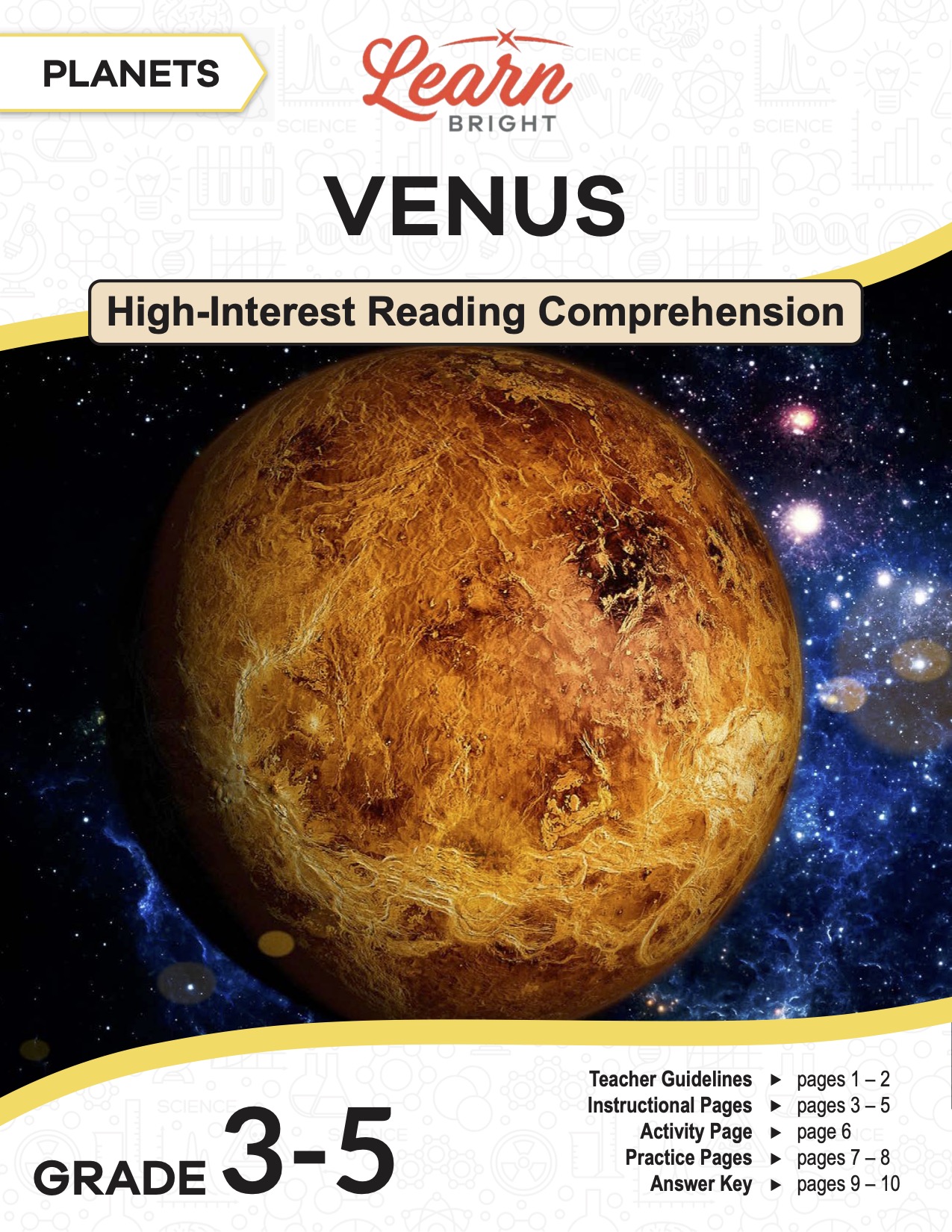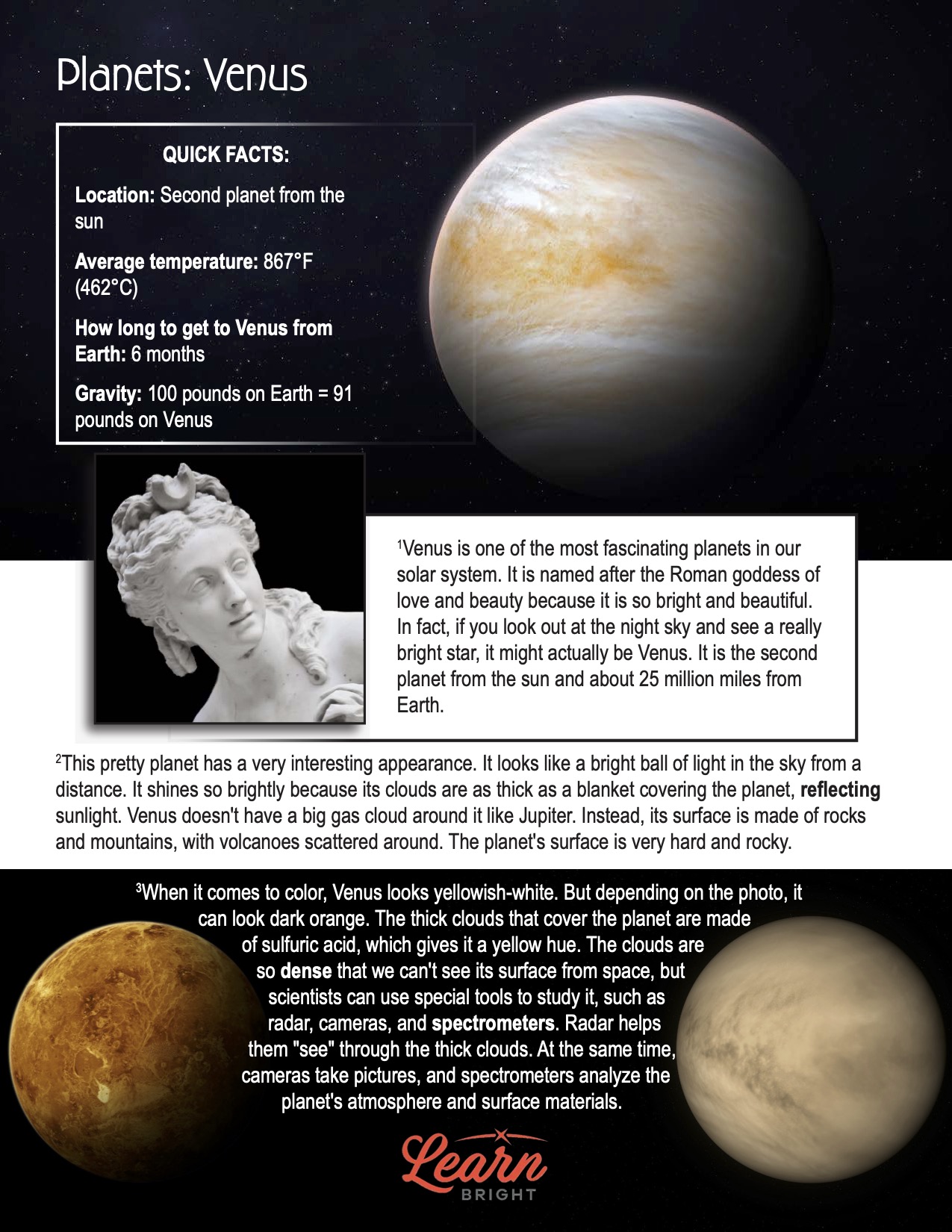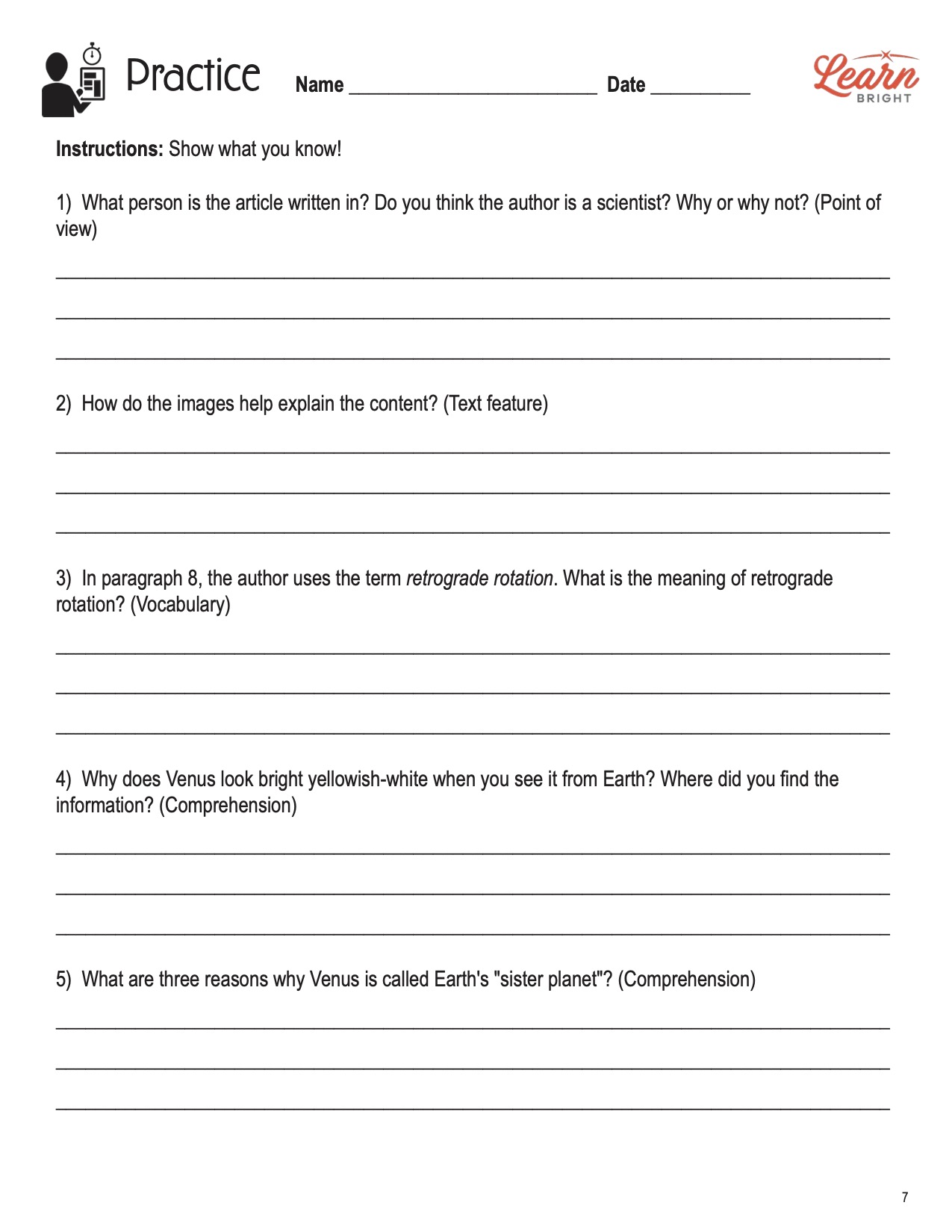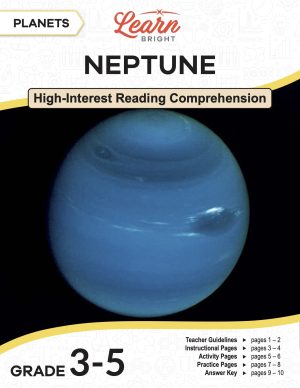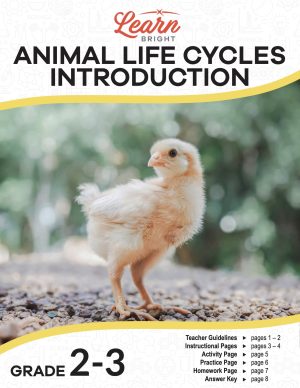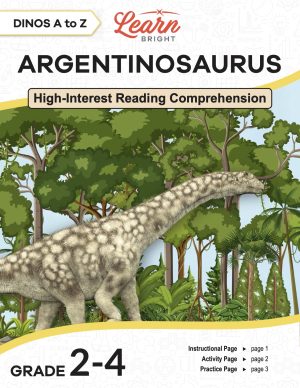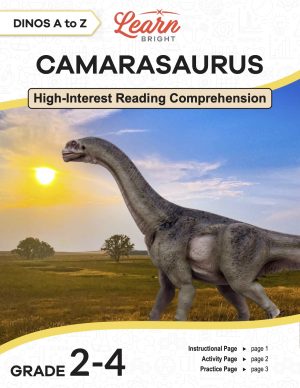Description
What our Planets: Venus lesson plan includes
Lesson Objectives and Overview: Planets: Venus is a high-interest reading comprehension lesson plan. As such, students will practice various close reading and comprehension skills. In addition, they will learn about the second-closest planet to the sun. This lesson is for students in 3rd grade, 4th grade, and 5th grade.
Classroom Procedure
Every lesson plan provides you with a classroom procedure page that outlines a step-by-step guide to follow. You do not have to follow the guide exactly. The guide helps you organize the lesson and details when to hand out worksheets. It also lists information in the yellow box that you might find useful. You will find the lesson objectives, state standards, and number of class sessions the lesson should take to complete in this area. In addition, it describes the supplies you will need as well as what and how you need to prepare beforehand. The activity requires a number of supplies, including CDs, foam balls, and paperclips. You may want to cut the foam balls in half ahead of time.
Teacher Notes
The teacher notes page provides an extra paragraph of information to help guide the lesson and remind you what to focus on. It explains that you can teach this lesson in a whole-class setting or as an independent, small-group activity. The blank lines on this page are available for you to write out thoughts and ideas you have as you prepare the lesson.
PLANETS: VENUS LESSON PLAN CONTENT PAGES
Introduction to Venus
The Planets: Venus lesson plan contains three content pages. Venus is one of the most fascinating planets in our solar system. It is named after the Roman goddess of love and beauty because it is so bright and beautiful. In fact, if you look out at the night sky and see a really bright star, it might actually be Venus. It is the second planet from the sun and about 25 million miles from Earth.
This pretty planet has a very interesting appearance. It looks like a bright ball of light in the sky from a distance. It shines so brightly because its clouds are as thick as a blanket covering the planet, reflecting sunlight. Venus doesn’t have a big gas cloud around it like Jupiter. Instead, its surface is made of rocks and mountains, with volcanoes scattered around. The planet’s surface is very hard and rocky.
When it comes to color, Venus looks yellowish-white. But depending on the photo, it can look dark orange. The thick clouds that cover the planet are made of sulfuric acid, which gives it a yellow hue. The clouds are so dense that we can’t see its surface from space, but scientists can use special tools to study it, such as radar, cameras, and spectrometers. Radar helps them “see” through the thick clouds. At the same time, cameras take pictures, and spectrometers analyze the planet’s atmosphere and surface materials.
Moons and Temperature
Like Mercury, Venus has no moons. This is very unusual because most planets in our solar system have at least one. Scientists think Venus might have had a moon at some point in the past. Some believe a big space collision could have knocked it out of orbit. If that did happen, the moon might have separated or drifted away from Venus.
Could there be life on this planet? That’s a fascinating question! Venus is extremely hot, with temperatures that reach up to 900° Fahrenheit. This is much hotter than the surface of Earth. Because it is so hot, scientists believe life as we know it would not survive on Venus. However, some forms of life could maybe live in its upper clouds, where it is a little cooler.
The weather on Venus is extreme. It has enormous storms with winds that can blow up to 200 miles per hour. The planet’s thick clouds cause a greenhouse effect, trapping heat and making it even hotter. Scientists study the weather on Venus by sending space probes to take pictures and measurements. One famous probe, called Venera, sent back data from the planet in the 1960s and 1970s.
Atmosphere and Geological Features
Venus also has some very unique features. It has a rocky surface with mountains, plains, and large volcanoes. One of the tallest volcanoes on Venus is called Maat Mons, which is about three times taller than Mount Everest. Some of the volcanoes may still be active today. The planet also has many craters created by impacts from space objects. Despite its thick clouds, scientists know that Venus has a surface full of lava plains and rough terrain. A lava plain is a flat area on a planet’s surface covered with hardened lava from volcanic eruptions.
Another interesting thing about Venus is that it rotates in the opposite direction of most planets. This means that on Venus, the sun would rise in the west and set in the east, unlike on Earth, where it rises in the east and sets in the west. This strange rotation is what we call retrograde rotation.
Venus is called Earth’s “sister planet” because it is similar to Earth in some ways. It is almost the same size and comprises similar materials, like rock and metal. Venus and Earth are also close to each other in the solar system. Even though they are similar, Venus is way hotter than Earth with its thick, cloudy atmosphere that traps heat. By comparing Venus to Earth, scientists can learn how different factors, like the greenhouse effect, changed the planet over time.
This planet is full of mystery. It is beautiful and bright but also very hot and dangerous. Even though it does not have moons or life as we know it, Venus still teaches us a lot about our solar system. Scientists will continue to explore the planet, hoping to learn more about its history and what makes it so unique.
PLANETS: VENUS LESSON PLAN WORKSHEETS
The Planets: Venus lesson plan includes two worksheets: an activity worksheet and a practice worksheet. Each one will help students solidify their grasp of the material they learned throughout the lesson. You can refer to the classroom procedure guidelines to know when to hand out each worksheet.
MODEL OF VENUS ACTIVITY WORKSHEET
For the activity, students will build an edible model of the planet Venus. They will follow the directions on the worksheet and use the supplies you provide. Those include crispy rice treats, saltwater taffy, and icing. Students will certainly enjoy their finished products!
PLANETS: VENUS REVIEW PRACTICE WORKSHEET
The practice worksheet lists 10 questions based on the content. These questions all relate to the content pages, so students will need to refer to them often for the answers. In addition, each question provides which reading tool the question corresponds to, such as text feature, vocabulary, or comprehension.
Worksheet Answer Keys
At the end of the lesson plan document is an answer key for the practice worksheet. The correct answers are all in red to make it easier for you to compare them with students’ responses. If you choose to administer the lesson pages to your students via PDF, you will need to save a new file that omits these pages. Otherwise, you can simply print out the applicable pages and keep these as reference for yourself when grading assignments.

